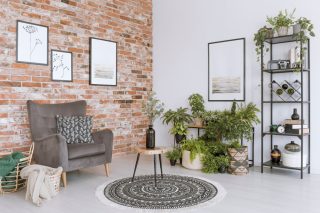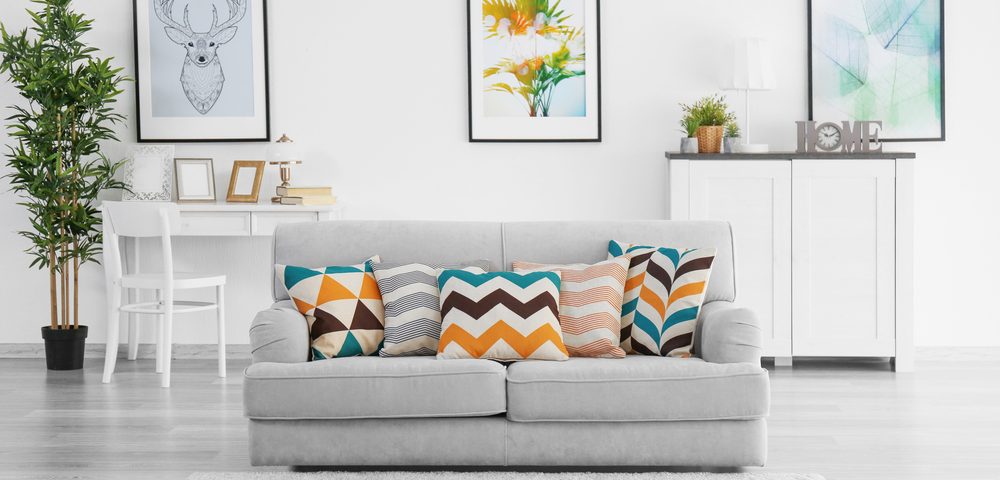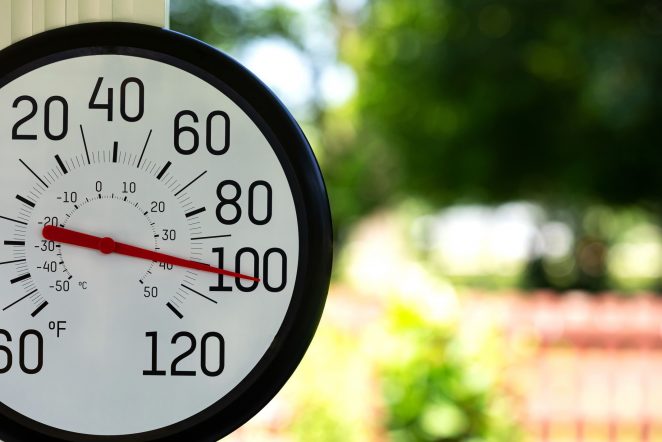By Angie Chandler, NBC-HWC, NASM-CPT, FLT-vLE
Even with a busy fall and heading into a stressful holiday season, with added uncertainty due to COVID-19, a healthy wellbeing can still be possible. All it takes is a list, a little creativity and an action plan. In this “Healthy Wellbeing” series feature we’re focusing on environment—how to positively reframe the places and spaces that directly influence our daily happiness.
One effective way to take great care of yourself is to design an ideal indoor environment, including things that bring joy and peace, while eliminating tolerations and letting go of things that no longer serve you well. The most important step in this practice is to become aware. This is especially important now that many of us are living, working and going to school under one roof.
Take note: is it life-giving or energy-draining?
Take a look around. What’s the first feeling that comes to mind? Make a list… or two. The places we spend the majority of our time each day should consist of things that cause or enhance a sense of satisfaction, fulfillment and positive functioning. When our environment is healthy, we feel positive emotions and moods such as contentment and happiness. It should be absent of negative emotions—like depression and anxiety.
Take an objective look around the room or space whether it’s home, the office or even your car, and make two lists of what’s positive or negative about it. What makes you happy, lifts your spirits, and gives you life as you enter the space? And what have you been putting up with? What lends to that heavy feeling? Note which components are most important to you—right down to the color on the walls.
How deep is your clutter?
Occasionally, the things we allow to pile up are items that are sentimental.
Sometimes the heirlooms and souvenirs that remind us of fond memories can surround us in clutter. These items can be the toughest to part with. Here are my 7 favorite tips:
- Start with an easy area or the area that annoys or distracts you the most.
- Give yourself a time limit.
- Give yourself a challenge.
- Only keep what is essential or beautiful.
- Get some help.
- Give your things a second life.
- Connect with your emotions.
If you don’t like it—fix it.
Sometimes it can be difficult to identify at first what is energy-draining in our life simply because we’ve made it a part of our lifestyle. Unfortunately, as humans, we’re masters of making adoptions to both positives and negatives in life. An extreme example of this would be when someone sets their coffee cup down on that stack of boxes that’s been sitting in their office for so long, it now serves as a side table.
“I’ll get around to it someday” really means “I’ll get around to it never.” Prioritize your tolerations with what wears your energy down the most. Brainstorm quickly and write the tolerations down as they come to mind. These tolerations can be your bad habits that cause stress, such as the tendency to plop the mail down on the table without sorting out what you don’t need. Daily habits like this can pile up, little by little, until we become aware of what we do because we can’t overlook it anymore.

Anything that drains energy and causes stress to you should go on this brainstorm list. Expand your list into sub-categories or a scale of “easy to fix” all the way to “first steps—and a plan.” Flesh out the details no matter how silly they seem.
Try to fix the small annoyances that are nagging you. For example, that irritating noise the bathroom door makes every time it moves might be an easier fix than you thought. Maybe it’s something as simple as changing a light bulb. The garage door that catches and bounces back up may need a professional, but you can control those simple fixes. Write them down. Because tolerating small, seemingly insignificant nuisances wears away our resilience.
Focus on what you can control.

You can achieve many positive aspects in your environments by taking simple action plans within them. For instance, controlling sounds within your environment can help you achieve clearer thinking. Adjusting the ergonomics of your workplace can improve performance and posture.
Adding artwork or music to an environment can produce joy and happiness. Even something simply like organizing a cluttered desktop can offer more energy.
Design your “nest.”

Decide what’s most important to you when it comes to thriving in a healthy environment. What makes your space feel special? What makes your senses happy? Here are a few examples of ways to build your best space:
- Have a source of natural lighting
- Try an essential oil diffuser for a calming scent
- Check your climate and add climate control if needed
- Do you need an air purifier for better breathing?
- Add something green—the color of life
- Love books? Flaunt your favorite titles
- Play sounds that make you feel joy, such as music or nature sounds
- How’s your chair? If you’re slouching, adjust or try a new model
- Display photographs of loved ones, pets or favorite travel spots
- Hang art—what speaks to your inner connoisseur?
 Beauty is in the eye of the beholder, so let your taste in art and of what is beautiful evolve. Make looking at what you love part of your healthy space.
Beauty is in the eye of the beholder, so let your taste in art and of what is beautiful evolve. Make looking at what you love part of your healthy space.
Remember to just do it—don’t overthink the process. Start now. If not now, when? Your wellbeing deserves it.
About the Author: Angela Chandler, NBC-HWC, NASM-CPT, FLT-vLE is a health coach in Priority Health’s Wellness Department and has been a ThinkHealth byline author for 5 years. She holds the 2017 National Board-certification for Health and Wellness Coaches and has worked as a wellcoaches®-certified Health and Wellness professional coach for 8 years. Angie has been a National Academy of Sports Medicine-certified personal trainer for 25 years, and a Firstline Therapy®-lifestyle educator for 8 years. Her professional experiences continue to fuel her passion for writing health and wellness content. Prior to Priority Health, she worked at EHAC, The MAC, and CHCC in Grand Rapids. Angie partners with people in a positive, respectful, non-judgmental and playful way that brings out their best and generates inspiration.


